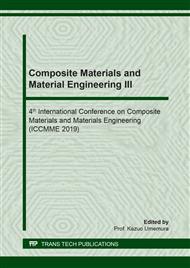p.193
p.199
p.205
p.211
p.219
p.227
p.233
p.239
p.245
Modeling of Artificial Neural Network for the Prediction of Hole Taper and HAZ Width of Nd:YVO4 Laser Micro-Drilled Copper Sheet
Abstract:
Copper is one of the best light metal based on their properties and usefulness in the field of precision parts.Emergence of advanced engineering materials, unusual size and intricate shape of jobleads towards the use of non-conventional machining processes. Laser beam machining (LBM) is one of them which is non-contact and optical-thermal process used for machining almost all range of engineering materials. Artificial neural network is used to develop a prediction model representing complex relationship between the input (process) parameters and output parameters (responses). In this present paper, micro-drilling has been performed on 0.2 mm thickcopper sheet by Nd:YVO4 laser of 12 kW. Design of experiment is performed by Taguchi's L9 orthogonal array. Here, hole taper and HAZ width have been observed varying the process parameters like laser beam power, pulse frequency, scanning speed and number of pass. Experimental results are analyzed by S/N ratio and verified by confirmation experiment. A feed forward back propagation ANN model is also developed to predict the responses at any combination of process parameters within the limit.
Info:
Periodical:
Pages:
219-226
Citation:
Online since:
May 2019
Authors:
Price:
Сopyright:
© 2019 Trans Tech Publications Ltd. All Rights Reserved
Share:
Citation:


